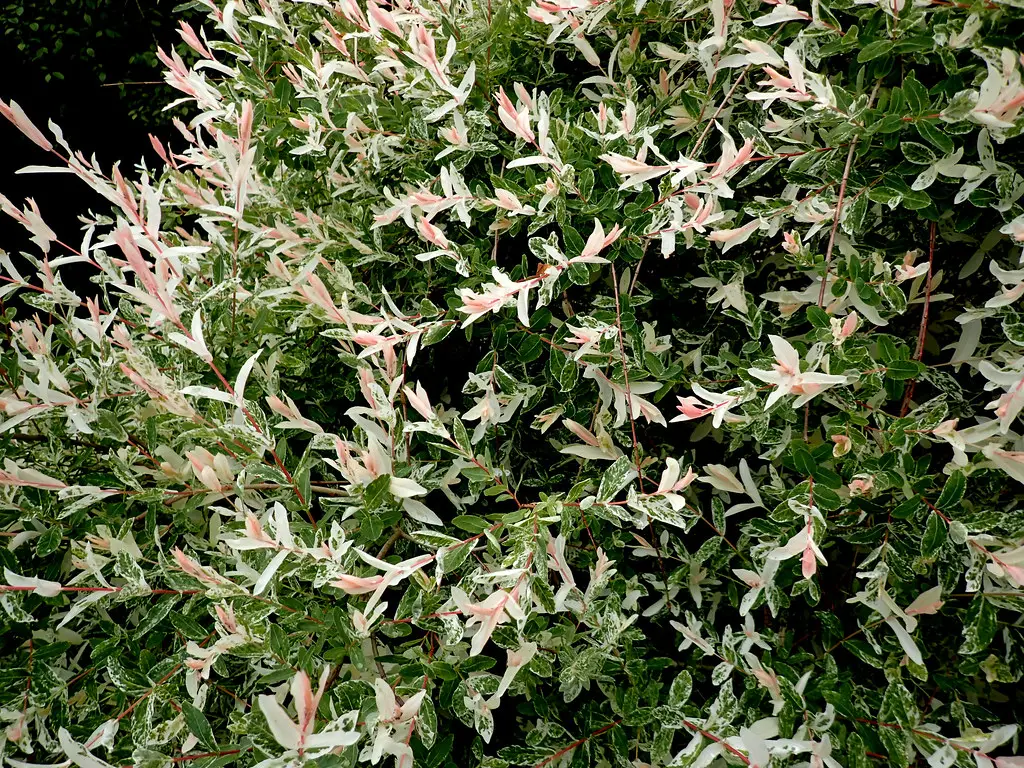The Dappled Willow, a stunning ornamental shrub, is a spectacle in gardens, providing year-round interest with its unique coloration and graceful growth habit. Known for its variegated leaves that showcase shades of pink, green, and white, the Dappled Willow also puts forth attractive catkins in the spring that add to its allure.
This deciduous shrub belongs to the willow family and grows rapidly. In addition to its visual appeal, it is cherished for its adaptability and hardiness, thriving in various climates and soil conditions. The Dappled Willow can be a vibrant specimen in a garden, a part of a mixed shrub border, or an attractive hedge.
Though relatively easy to care for, the Dappled Willow does require specific attention to thrive, particularly in its formative years. The proper understanding of its needs concerning sunlight, water, soil, and general maintenance can result in a lush and vigorous plant that will be a garden’s highlight.
| Attribute | Details |
|---|---|
| Common Names | Dappled Willow, Variegated Willow, Tri-color Willow |
| Botanical Name | Salix integra ‘Hakuro Nishiki’ |
| Family | Salicaceae |
| Plant Type | Deciduous Shrub |
| Mature Size | 4-6 feet tall and wide |
| Sun Exposure | Full sun to part shade |
| Soil Type | Moist, well-drained |
| Hardiness Zones | 4-9 |
| Native Area | Japan |
Dappled Willow Care
Caring for a Dappled Willow requires understanding its natural growth patterns and preferences. This rapid grower needs regular pruning to maintain its shape and showcase its variegated foliage. The vibrant coloration can be encouraged with proper sun exposure.
Watering and soil conditions are vital as well. The Dappled Willow prefers consistently moist soil, especially in its early years. Given its adaptability, it’s a fantastic choice for gardeners looking for a low-maintenance but visually striking addition to their garden.
Light Requirement for Dappled Willow
Dappled Willow performs best in full sun to part shade. While it can tolerate a range of light conditions, the unique variegation is best encouraged with plenty of sunlight. In shaded conditions, the vibrant colors may diminish.
Soil Requirements for Dappled Willow
While adaptable to various soil types, the Dappled Willow prefers moist, well-drained soil. It can grow in clay, loamy, or sandy soil, provided it retains enough moisture without becoming waterlogged.
Water Requirements for Dappled Willow
Regular watering is essential for the Dappled Willow, especially in the first few years after planting. Once established, it can tolerate some drought but will thrive with consistent moisture.
Temperature and Humidity
The Dappled Willow is hardy in zones 4-9, making it suitable for a wide range of climates. While it can tolerate cold winters, it may need protection in the harshest of temperatures. Humidity levels are generally not a concern for this adaptable shrub.
Fertilizer
A balanced, slow-release fertilizer can be applied in early spring to promote growth. Fertilizing is generally not a requirement but can provide a boost if the soil is particularly poor.
Pruning Dappled Willow
Regular pruning is essential to maintain the Dappled Willow’s shape and encourage the vibrant coloration of the new growth. Annual pruning in late winter to early spring is generally advised, cutting back to a strong framework of branches.
Propagating Dappled Willow
Dappled Willow can be propagated through hardwood cuttings taken in late winter or softwood cuttings in spring or early summer. Rooting hormone can enhance the success rate.
How To Grow Dappled Willow From Seed
Growing Dappled Willow from seed is rare and generally not recommended, as it may not preserve the variegation. Propagation through cuttings is the preferred method.
Common Pests & Plant Diseases
Aphids
Aphids can be an issue but are typically managed with regular monitoring and treatment if necessary.
Willow Scab
A fungal disease that can cause black spots on the leaves.
Common Problems With Dappled Willow
Loss of Variegation
This can occur in poor lighting conditions or if pruning is neglected.
Water Stress
Inconsistent watering can cause leaf drop or wilt.
Pro Tips
- Plant in a sunny location to enhance variegation.
- Keep soil consistently moist, especially during establishment.
- Prune annually to maintain shape and encourage colorful new growth.
- Use in mixed borders or as a specimen plant to highlight its unique appearance.
- Monitor regularly for pests and diseases to catch issues early.




